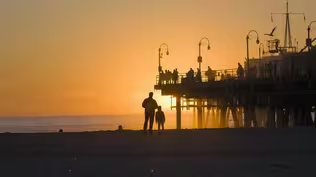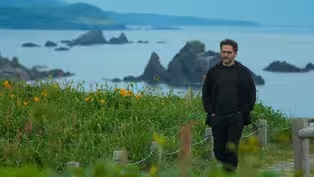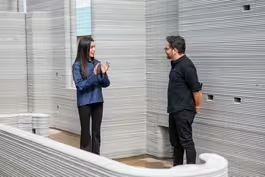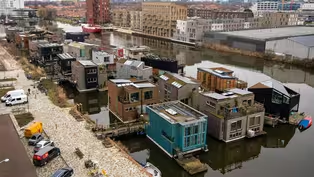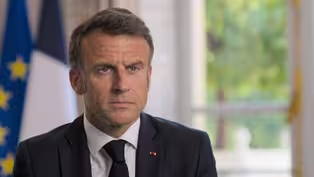
The Vital Importance of Better Infrastructure
Clip: Episode 5 | 3m 4sVideo has Closed Captions
Building better cities and transportation can influence human connection and cooperation.
Ari speaks with Pete Buttigieg about how building better infrastructure and transportation can influence human connection and cooperation. Buttigieg also explains the importance of designing communities that encourage interaction and relationships.
Problems playing video? | Closed Captioning Feedback
Problems playing video? | Closed Captioning Feedback
Supported by the Hoveida Family Foundation and The Rosalind P. Walter Foundation.

The Vital Importance of Better Infrastructure
Clip: Episode 5 | 3m 4sVideo has Closed Captions
Ari speaks with Pete Buttigieg about how building better infrastructure and transportation can influence human connection and cooperation. Buttigieg also explains the importance of designing communities that encourage interaction and relationships.
Problems playing video? | Closed Captioning Feedback
How to Watch A Brief History of the Future
A Brief History of the Future is available to stream on pbs.org and the free PBS App, available on iPhone, Apple TV, Android TV, Android smartphones, Amazon Fire TV, Amazon Fire Tablet, Roku, Samsung Smart TV, and Vizio.
Buy Now
Providing Support for PBS.org
Learn Moreabout PBS online sponsorship- How can we build futures where we design for more human connectedness?
And is that even possible in a moment that feels more deeply divided than anything in our lifetimes?
I came to Washington to sit down with the Secretary of Transportation, Pete Buttigieg, someone who thinks a lot about how we are shaping now only the social fabric, but the actual infrastructure of America.
You're leading the Department of Transportation.
That's real infrastructure.
It's bridges.
It's tunnels.
It's airports.
It's roads.
That being said, what are the takeaways to build other types of kind of social infrastructure, in a sense more of that human connective tissue?
- Well, there's a very real relationship between how we connect to each other physically through transportation and how we connect to each other socially.
Even in an era where we are discovering remote and hybrid and virtual interaction, we're also seeing how important it can be to just be around each other or to literally walk the streets of one another's communities, to travel and understand through travel how other societies work.
One finding that I think is very powerful is when people get to know each other better, they tend to trust each other more, not less.
- It's 30 years from now, and you're talking to your children about this era, this moment in human history.
How do you describe it?
- Well, I'm gonna tell them that this was a moment when a lot of changes happened in our society, certainly in transportation, and those changes led to their lives getting better.
I think that we need to be in a season of building, not just because we have a backlog and there's a bunch of stuff we should have been doing the whole time, but because the projects that are ahead in this century, the big, shared national and human projects, like confronting climate change, staying a step ahead of the next pandemic, preventing nuclear conflict, will require levels of cooperation that, in turn, require a lot of good infrastructure.
- Are we able to rebuild to that kind of golden era of community that we once had?
- Yeah, I believe we can, and I believe we must.
This is not just important because of some vague and romantic conception of neighborhoods and communities.
It's also got life-and-death consequences.
There's evidence, for example, that the survivability of tornadoes, all other things being equal, goes up in neighborhoods or communities where neighbors know each other.
So a simple principle or test, whether you're designing a suburban subdivision or a dense city block, would be, does this design encourage or discourage people from knowing who their neighbors are?
I really believe in so many of these dimensions-- political, social, even technological-- our salvation will come from the local.
And we need processes that empower local decision making.
Video has Closed Captions
Preview: Ep5 | 30s | How can we create futures that serve the needs of all people? (30s)
Video has Closed Captions
Clip: Ep5 | 1m 26s | 3D printed homes pose a potential solution to addressing the growing housing crisis. (1m 26s)
The Future of Sustainable Housing
Video has Closed Captions
Clip: Ep5 | 9m 35s | Ari explores better, more sustainable ways of living together going forward. (9m 35s)
The Power of Deliberative Democracy
Video has Closed Captions
Clip: Ep5 | 8m 52s | Ari explores forms of deliberative democracy around the world that empower citizens. (8m 52s)
Providing Support for PBS.org
Learn Moreabout PBS online sponsorshipSupport for PBS provided by:
Supported by the Hoveida Family Foundation and The Rosalind P. Walter Foundation.
